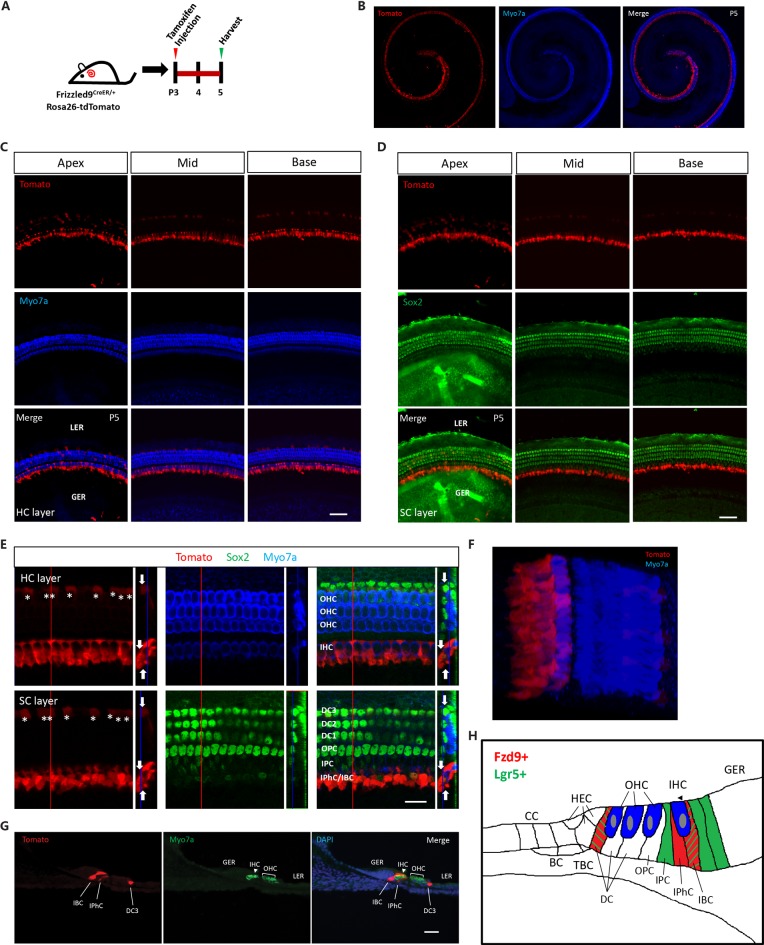Figure 1.
The expression of Fzd9 in the neonatal mouse cochlea. (A) Tamoxifen was I.P. injected into P3 Fzd9-CreER/Rosa26-tdTomato mice to activate cre, and the cochleae were dissected 48 h later to identify the tdTomato expression pattern, which indicates Fzd9 expression. (B–G) Fzd9 expression was shown by tdTomato. The low-magnification images (B) showed that Fzd9 is expressed in the cochlea. The HC layer (C) and SC layer (D) showed that Fzd9 is expressed in the SCs, but not in the HCs. The high-magnification figures showed that Fzd9 is expressed in IPhCs, IBCs, and the third-row DCs (indicated by white *; E). The large square images are single XY slices, the vertical red line shows the position of the orthogonal slice that is shown to the right of each panel, and the blue line on the orthogonal slice shows the level of the XY slice to the left. Orthogonal projections of tdTomato+ cells are indicated by white arrows. A three-dimensional reconstruction of Fzd9 expression is shown in (F). The cryosections also showed the same Fzd9 expression pattern (G). Myo7a was used as the HC marker and Sox2 was used as the SC marker. Scale bar, 50 μm in (C,D,G) and 20 μm in (E). (H) Schematic of Fzd9 expression in the neonatal mouse cochlea. HC, hair cell; SC, supporting cell; IHC, inner hair cell; OHC, outer hair cell; DC, Deiters’ cell; OPC, outer pillar cell; IPC, inner pillar cell; IPhC, inner phalangeal cell; IBC, inner border cell; GER, the lateral greater epithelial ridge; LER, lesser epithelial ridge; TBC, tympanic border cells; CC, Claudius cells; HEC, Hensen’s cells; BC, Boettcher cells.

